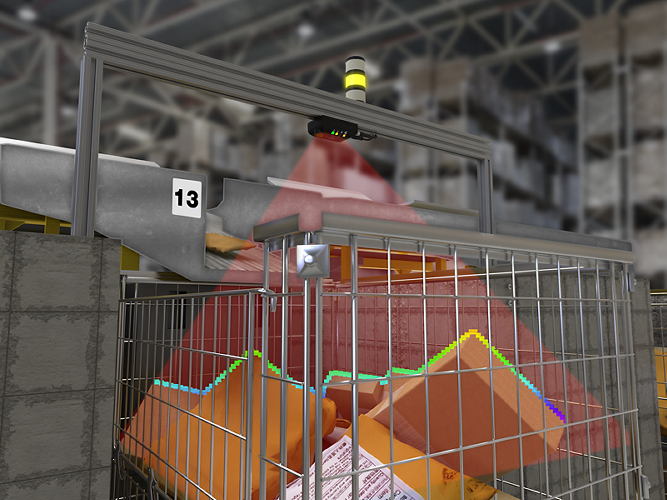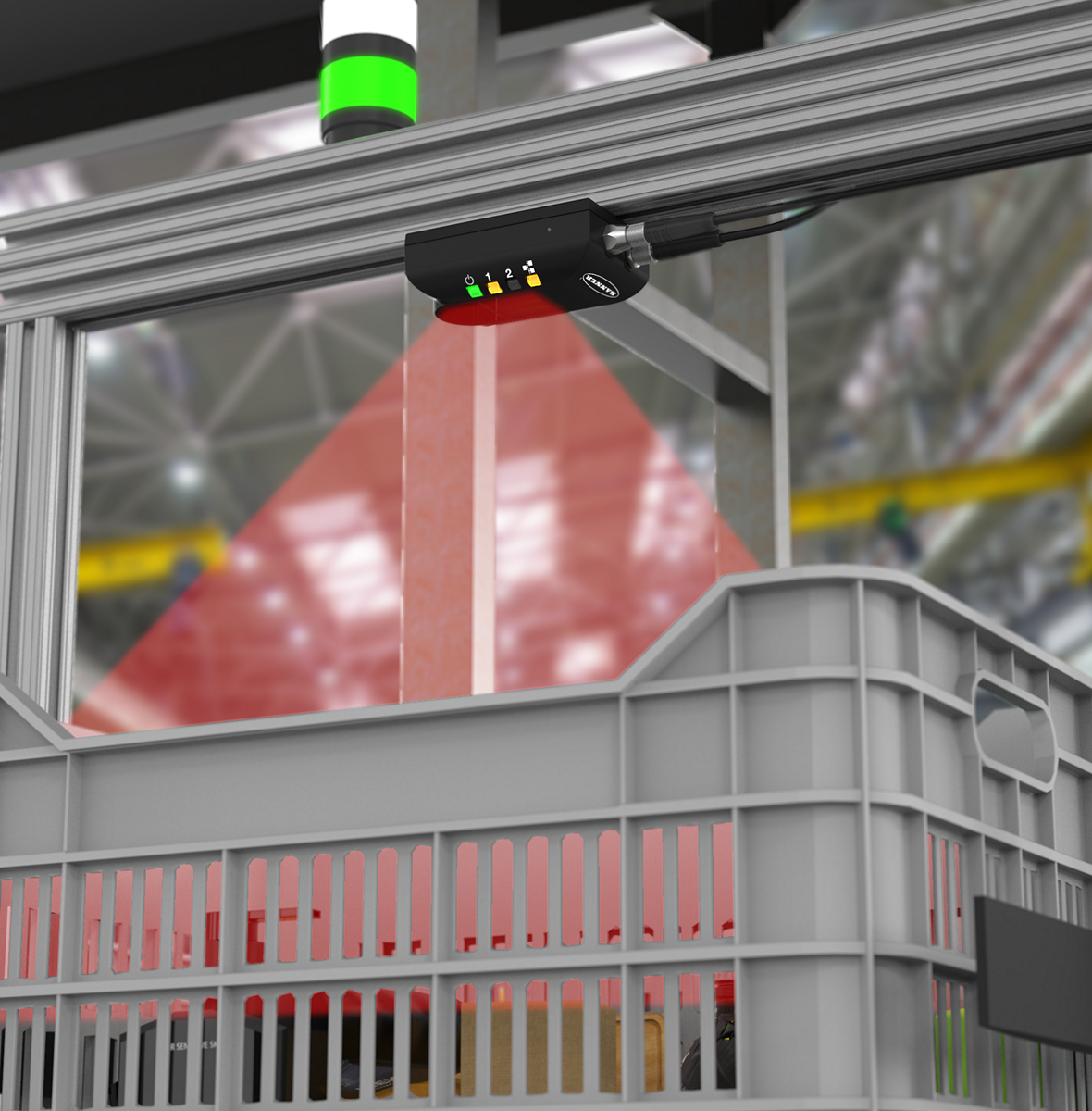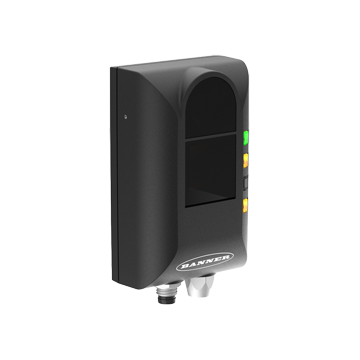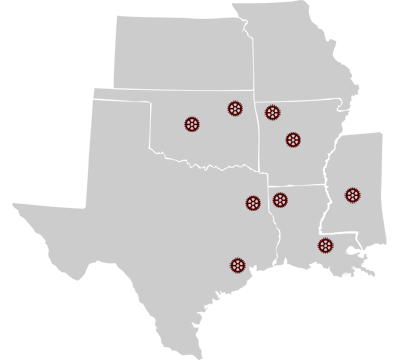The ZMX Series 3D Time of Flight Sensor can measure and monitor objects within a three-dimensional area. Providing a single-sensor solution for filling applications, the ZMX Series can detect both the peak height and average fill level. The sensor features a large 60° × 45° field of view, with a range of 200 to 2,500 mm (7.9 in. to 8.2 ft.).
Because it can detect items of any size, shape, or orientation, the ZMX sensor is an ideal tool for automated industrial applications in which materials, products, or packages accumulate within a defined area.
- The ZMX measures peak height and volume fill percent within a large field of view
- The sensor monitors an entire sensing region on interest, not a single point like an ultrasonic or laser sensor
- Deploy in minutes with only a few settings to define
- Completely self-contained, no controller of PC required for operation
- Configurable sensing range up to 2.5 m
- Available in discrete and Pulse Pro outputs for simplified deployment; industrial ethernet communications available in integrate with the Smart Factory
- Compact, rugged IP65 housing designed for industrial environments
Container-Fill Monitoring Made Easy
 The ZMX Series sensor can be used to monitor the contents of containers collecting items from a chute or conveyor in an automated system.
The ZMX Series sensor can be used to monitor the contents of containers collecting items from a chute or conveyor in an automated system.
By combining digital imaging and thousands of laser measurement points, it can detect objects within a three-dimensional area. For example, when a bin is put in place to collect a quantity of small rectangular boxes, the contents accumulate and form a pile that will have an unpredictable shape. To accurately determine when the bin is full, a sensor solution must be able to detect fill height variations across the bin’s total area.
Detect Peak Height or Volume over a Large Sensing Area
The ZMX is perfect for recognizing maximum heights of objects, regardless of where the highest point might be within that sensing area. It is also useful for calculating fill volume. This is a great way to ensure that containers are being filled to a consistent volume, prevent overfill, or to track fill rates and fine-tune processing speeds.
More Reliable Than Single-Point Sensors
The ZMX can simplify applications that otherwise would require multiple single-point sensors. A single 3D sensor is easier to install and track, but it also delivers more reliable performance. Traditional single-point technologies may be unreliable when measuring an accumulation of shapes. For example, a single laser may measure low by measuring a gap between two objects, or an ultrasonic may not have a reading at all due to the signal being reflected away by an oddly angled or shaped object. By contrast, one centrally positioned ZMX sensor provides complete area coverage in three dimensions.
Easy Setup and Integration
 The ZMX 3D Time of Flight Sensor has been designed for quick setup and integration in work areas. Simply position and mount the sensor where it can monitor the intended area (for example, directly above a container or pallet stack, pointing downward). Then apply power and connect an Ethernet cable to a PC running the Banner 3D Configuration Software (available as a free download). Use the software to define sensing conditions: the bottom of the container as the anchor point, the size of the sensing region, and thresholds for peak height and volume. After this quick configuration, the sensor can be disconnected from the PC; it is fully self-contained and ready to immediately send signals to an indication light, controller, or chosen PLC, using its dual discrete outputs or the supported industrial Ethernet protocols.
The ZMX 3D Time of Flight Sensor has been designed for quick setup and integration in work areas. Simply position and mount the sensor where it can monitor the intended area (for example, directly above a container or pallet stack, pointing downward). Then apply power and connect an Ethernet cable to a PC running the Banner 3D Configuration Software (available as a free download). Use the software to define sensing conditions: the bottom of the container as the anchor point, the size of the sensing region, and thresholds for peak height and volume. After this quick configuration, the sensor can be disconnected from the PC; it is fully self-contained and ready to immediately send signals to an indication light, controller, or chosen PLC, using its dual discrete outputs or the supported industrial Ethernet protocols.
Applications
- Bin fill and peak height monitoring
- Overfill detection
- Pallet heights to assist in stacking or depalletizing
- Parcel management
- Shipping and receiving
- Conveyor statistics by tracking material flow volume or height
Contact Your IES Team to Learn More



